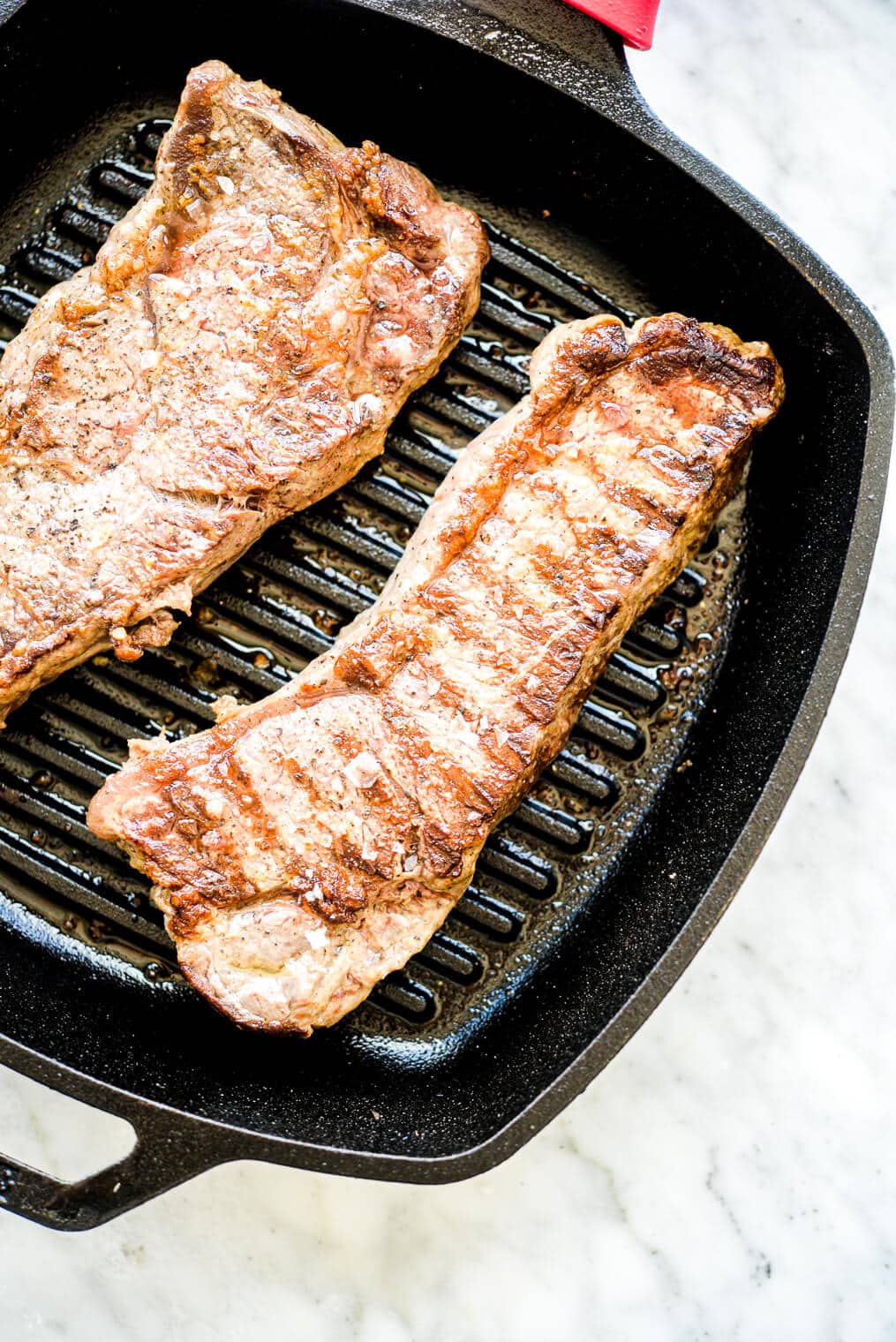A cast iron skillet is the ultimate workhorse of the kitchen, and it’s particularly fantastic for searing a steak to perfection. Its thick, heavy base retains heat exceptionally well, ensuring even cooking and a beautiful crust. The non-stick properties of a well-seasoned cast iron skillet make it a breeze to cook with, and the natural flavors of the meat are enhanced by the iron infusion. Plus, cast iron skillets are virtually indestructible, making them a worthwhile investment for any home cook.
Why Cast Iron is Perfect for Steak

Heat Retention: The thick, heavy base of a cast iron skillet distributes heat evenly, ensuring a perfectly cooked steak.
Tips for Using a Cast Iron Skillet for Steak
1. Preheating: Preheat your cast iron skillet over medium-high heat for several minutes. A hot skillet is crucial for a good sear.
2. Oil: Add a high-smoke-point oil, such as grapeseed or vegetable oil, to the hot skillet.
3. Seasoning: Season your steak generously with salt and pepper.
4. Cooking: Place the steak in the hot skillet and cook for the desired time, flipping once.
5. Resting: Let the steak rest for a few minutes before slicing. This allows the juices to redistribute.
Beyond Steak: Other Uses for a Cast Iron Skillet
While cast iron skillets are excellent for searing steaks, they’re versatile tools that can be used for a variety of cooking tasks. Here are a few ideas:
Pan-Seared Salmon: The high heat of a cast iron skillet creates a crispy crust on salmon fillets.
Whether you’re a seasoned home cook or just starting out, a cast iron skillet is a valuable addition to your kitchen. Its versatility, durability, and ability to enhance the flavor of food make it a must-have for any cooking enthusiast. So, next time you’re craving a perfectly cooked steak or any other delicious dish, reach for your trusty cast iron skillet.
A Timeless Classic for the Casual grill pan Steak
Cast iron skillets are culinary workhorses, capable of transitioning seamlessly from stovetop to oven. Their ability to retain heat evenly and efficiently makes them ideal for searing a steak to perfection. The thick, heavy base of a cast iron skillet ensures that the steak’s juices are locked in, resulting in a juicy, flavorful, and beautifully browned exterior.
The Science Behind the Sizzle
The secret to a great steak lies in the Maillard reaction, a chemical process that occurs when protein and sugar molecules react at high temperatures. This reaction is responsible for the delicious brown crust and complex flavors that characterize a well-cooked steak. Cast iron skillets, with their exceptional heat retention, provide the optimal conditions for this reaction to take place.
A Versatile Cooking Vessel
Beyond steaks, cast iron skillets are incredibly versatile. They can be used to cook a wide range of dishes, from crispy hash browns to hearty soups and stews. Their durability and longevity make them a worthwhile investment for any home cook.
Caring for Your Cast Iron Skillet
While cast iron skillets are incredibly durable, they do require a bit of care and attention. Proper seasoning is essential to prevent rust and ensure even heat distribution. Seasoning involves coating the skillet with a layer of oil and heating it in the oven. Over time, this process creates a non-stick surface that improves with each use.
Choosing the Right Cast Iron Skillet
When selecting a cast iron skillet, consider the size and weight. A 10-inch or 12-inch skillet is ideal for most steaks. The weight of the skillet is also important, as it affects its heat retention and cooking performance. A heavier skillet will retain heat more effectively, leading to better results.
Safety First
While cast iron skillets are incredibly durable, they can also be quite heavy. It’s important to handle them with care, especially when they are hot. Always use oven mitts or pot holders when handling a hot skillet. Additionally, be cautious when cleaning your skillet, as harsh detergents can damage the seasoning.
A Culinary Adventure
Cooking with a cast iron skillet is more than just a meal; it’s a culinary adventure. The rich history and versatility of this timeless tool make it a favorite among home cooks and professional chefs alike. So, the next time you’re craving a juicy, flavorful steak, reach for your cast iron skillet and let the magic happen.